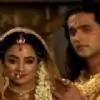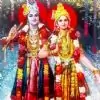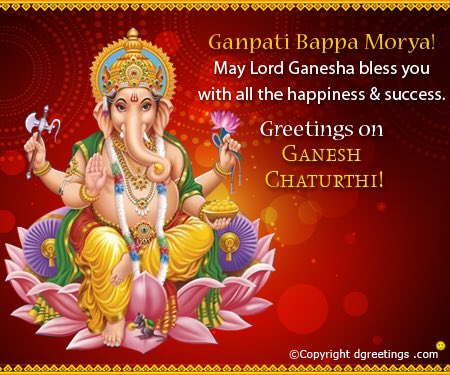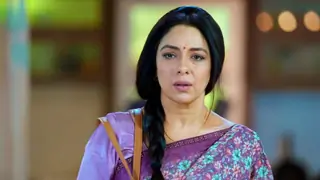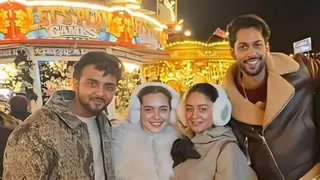Celebrations
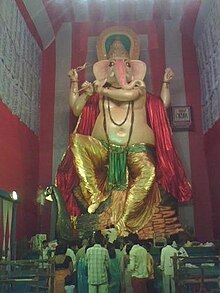
Ganesha Murti
Public Preparations for the festival begins months ahead. These pandals are usually funded by local residents and are collected through fairs and workshops.The idol making in Maharashtra usually begins with"Padya pooja" or worshipping the feet of lord ganesh. The idols are brought to "pandals" or temporary structures usually 15-20 days before. At home the festival begins with the selection and installation of a clay murti (idol). , Families decorate a small, clean corner with flowers and other colourful items before installing the idol. . When the idol is installed, it and its shrine are decorated with flowers and other materials.
In preparation for the festival, artisans create clay models of Ganesha for sale. The idols range in size from 34 inch (1.9 cm) for homes to over 70 ft (21 m) for large community celebrations.[5] The date for the festival is usually decided by the presence of chaturthi thithi. The festival is held during"Bhadrapada madyahanaa purvabaddha". If chaturthi thiti begins at night on previous day and gets over by morning on next day then the next day us observed as vinayaka chaturthi. In the consecrationceremony, a priest performs a Prana Pratishtha to invite Ganesha into the idol. This is followed by the 16-step Shodashopachara ritual,[6] (Sanskrit: Shodash, 16; Upachara, process) during which coconut,jaggery, modaks, durva grass and red hibiscusflowers are offered to the idol. Throughout the ceremony, hymns from the Rigveda, theGanapati Atharvashirsa, the Upanishads, and the Ganesha stotra (prayer) from the Narada Purana are chanted. Aartis are performed with friends and family, typically in the morning and evening
INDIA
In India, Ganesha Chaturthi is primarily celebrated at home and in public by local community groups in the western states ofMaharashtra,Gujarat and Goa and the southern states of Karnataka,Kerala, Andhra Pradesh, Telangana, and Tamil Nadu
At homes in Maharashtra, families install small clay statues for worship during the festival. The idol is worshiped in the morning and evening with offerings of flowers,durva(strands of young grass), karanji andmodaks.[7][8] The worship ends with the singing of an aarti in honour of Ganesha, other gods and saints. In Maharashtra the Marathi aarti "Sukhakarta Dukhaharta", composed by Samarth Ramdas in the 17th century, is sung.[9] Family traditions differ about when to end the celebration. Domestic celebrations end after 1, 1 12, 3, 5, 7 or 11 days, when the idol is brought to a body of water (such as a lake, river or the sea) for immersion. Due to environmental concerns, a number of families now avoid bodies of water and let the clay statue disintegrate in a barrel of water at home. After a few days, the clay is spread in the home garden. In some cities a public, eco-friendly process is used for the immersion.[10] In Maharashtra, Ganeshotsav also incorporates other festivals, namelyHartalika and the Gauri festival, the former is observed with a fast by women on the day before Ganesh Chaturthi whilst the latter by the installation of idols of Gauris.[11]
In Goa, Ganesh Chaturthi is known as Chavath in Konkani and Parab or Parva ("auspicious celebration");[12] it begins on the third day of the lunar month of Bhadrapada. On this day Parvati and Shiva are worshiped by women, who fast.[1] Instruments such asghumots, cymbals and pakhavajs are played during the ceremonies.[13] The harvest festival, Navyachi Pancham, is celebrated the next day; freshly-harvested paddy is brought home from the fields (or temples) and a pujais conducted. Communities who ordinarily eat seafood refrain from doing so during the festival.[1]
In Karnataka the Gowri festival precedes Ganesha Chaturthi, and people across the state wish each other well. In Andhra Pradesh, Ganesha idols of clay (Matti Vinayakudu) and turmeric (Siddhi Vinayakudu) are usually worshiped at home with plaster of Paris idols.
Ganesha Chaturthi is celebrated in the UK by the migrant Hindu population and the large number of Indians living there. The Hindu Culture and Heritage Society, a Southall-based organisation, celebrated Ganesha Chaturthi for the first time in London in 2005 at the Vishwa Hindu Temple; the idol was immersed in the River Thames at Putney Pier. Another celebration, organised by a Gujarati group, has been celebrated in Southend-on-Sea and attracted an estimated 18,000 devotees.[20] Annual celebrations are also held on the River Mersey in Liverpool.[21][22]
ABROAD
The Philadelphia Ganesha Festival is one of the most popular celebrations of Ganesha Chaturthi in North America,[23] and it is also celebrated in Canada, Mauritius, Malaysia and Singapore. The Mauritius festival dates back to 1896,[citation needed] and the Mauritian government has made it a public holiday.[24] In Malaysia and Singapore, the festival is more commonly known as Vinayagar Chaturthi because of the large Tamil-speaking Hindu minority.[25]
FOOD
The primary sweet dish during the festival ismodak (modak in Marathi and Konkani,
modakam or kudumu in Telugu, modaka orkadubu in Kannada,
kozhakatta or modakkamin Malayalam
and kozhukattai or modagam inTamil). A modak is a dumpling made from rice or wheat flour, stuffed with grated coconut, jaggery, dried fruits and other condiments and steamed or fried. Another popular sweet dish is the karanji (karjikai in Kannada), similar to modak in composition and taste but in a semicircular shape.This sweet meat is calledNevri in Goa and is synonymous with Ganesh festival amongst the Goans and the Konkani diaspora.[26]
In Andhra Pradesh and Kerala modak(which is uknown in Andhra), laddu, vundrallu (steamed, coarsely-ground rice-flour balls), panakam (a jaggery-, black pepper- and cardamom-flavored drink), vadapappu (soaked moonglentils) and chalividi (a cooked rice flour and jaggery mixture) are offered to Ganesha. These offerings are known as naivedya, and a plate of modak traditionally holds 21 pieces of the sweet. In Goa, modak and a Goan versionof idli (sanna) is popular.[27] the dishes are made with joy and enjoying the indian culture so many sweets and dishes are made all over the india like an circular sweety dish named ladoos are very famous and they are used to impress the siddhi vinayaka lord "ganesha"
Edited by _shadesnature_ - 9 years ago







